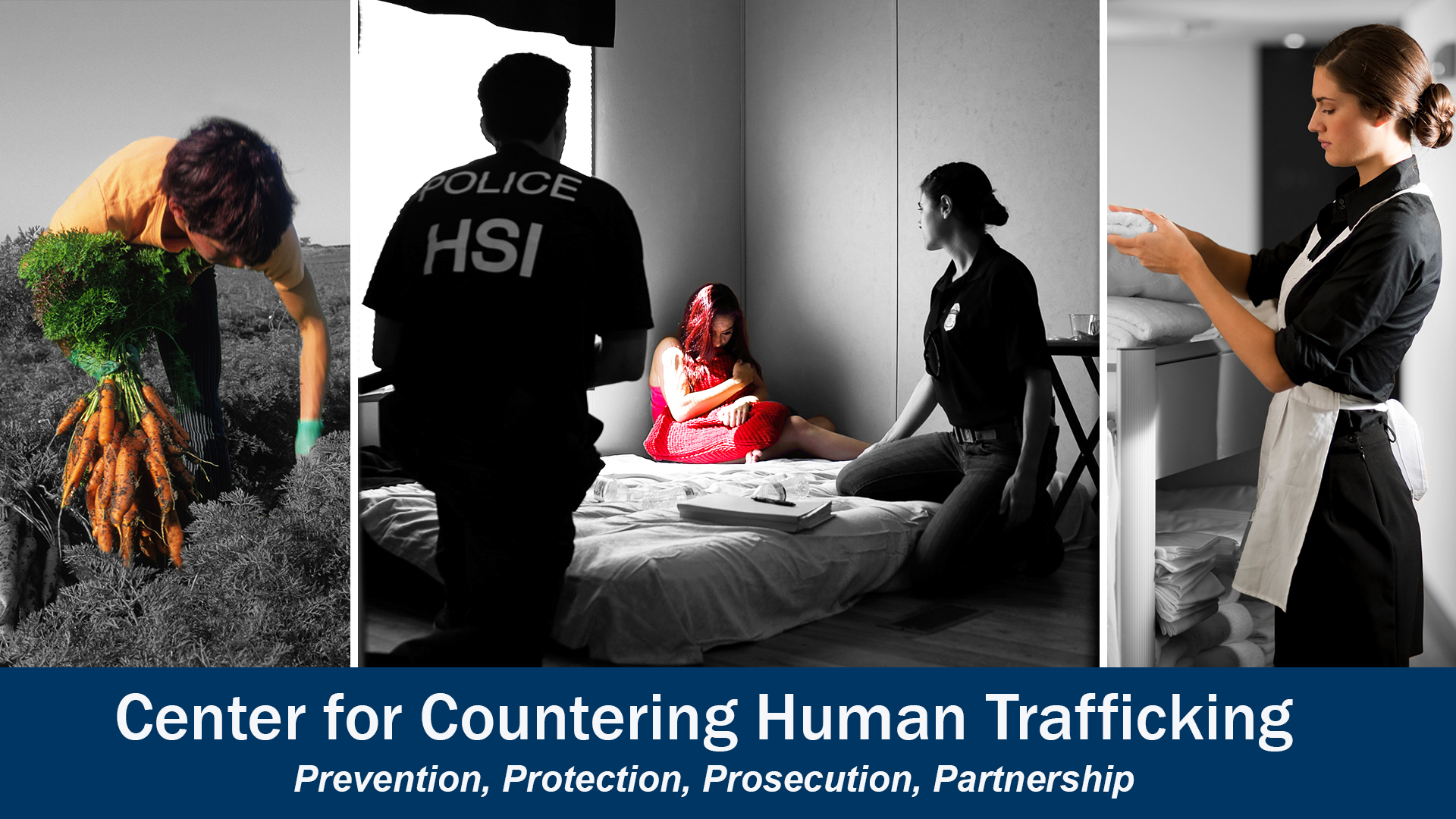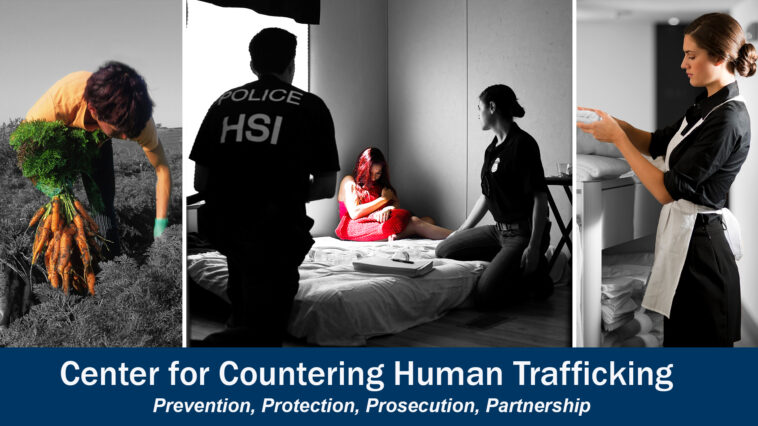
Understanding Compassionate Law Enforcement in a Changing Legal Landscape
In recent years, the legal world has witnessed some truly eye-opening twists and turns in the way various issues are being handled. One striking example is the approach taken by a specialized law enforcement unit in Portland, Oregon, where officers have chosen to help human trafficking victims with empathy instead of relying solely on punishment. This choice, while subject to debate and criticism, reflects a shift in the broader discussion about justice. By taking a closer look at this change, we can better understand how compassion, accountability, and even modern technology are reshaping our legal system.
In parallel, headlines across the nation reflect a series of challenging and sometimes off-putting events—from police chiefs and entire forces suddenly placed on leave after arrests, to the harrowing recovery stories of those who have suffered life-altering accidents. Each event provides us with a glimpse into the tangled issues that both the legal system and the public must grapple with. Not only do these events stir strong opinions, they also shed light on the need for a balanced approach in law enforcement—a balance between upholding the law and providing humane treatment to all citizens.
Addressing Human Trafficking with Empathy Instead of Punishment
When discussing human trafficking, the conversation often centers on legal rigidity and the need for severe consequences. However, in Portland, Oregon, law enforcement is taking a noticeably different course. Officers are choosing to treat trafficking victims not as perpetrators of a system gone awry, but as individuals caught in the web of exploitation. This compassionate approach—helping victims begin their journey of recovery—highlights several critical points that deserve our attention.
First, it is important to note that many victims of human trafficking face not only physical and emotional trauma but also the intimidating task of reintegrating into society. By offering support rather than punishment, the unit aims to guide these individuals through the fine points of recovery. Such measures are super important because they address the subtle details of victim care that often remain in the shadows. The approach is not without its challenges, however. Officers must carefully work through the dangerous labyrinth of legal, social, and psychological issues that surround human trafficking.
Critics argue that by appearing lenient on traffickers, law enforcement risks undermining the case against this grave crime. Yet, when we take a closer look at the situation, we see that this method is designed to steer through the competing priorities of justice and humanity. Officers are essentially trying to balance on a thin line—making sure they do not overlook the human story behind each case, while also ensuring that the law is upheld. This dual focus is one of the more complicated pieces of modern policing, where empathy is seen as a part of effective public service.
Sorting Out Accountability When the Law Falls Short
The legal system is, by nature, full of problems, and there are moments when key players seem to step out of line. Recent headlines have shown entire police forces being put on leave after several arrests, including that of a police chief. Incidents like these are not only tense but also showcase the small distinctions between accountability and professional integrity. They force us to reexamine how law enforcement units can improve their practices and ensure that accountability measures are both fair and effective.
There are several aspects layered into these stories. For one, when leadership is implicated in criminal behavior, it creates an environment where even well-intentioned officers might feel overwhelmed. This, in turn, muddies the water regarding trust in law enforcement. While the community deserves sound legal protection, these events also remind us that even those who are meant to protect us can be taken off track by their own complicated pieces. The intricate issues in these cases demand an unbiased investigation, and they illustrate the need for systems that help find your way through ethical and legal quandaries.
Moreover, a key issue here is transparency. Public opinion often hinges on whether there is a clear, understandable process for holding officials accountable without alienating the public. In a climate where every decision is closely scrutinized, ensuring that each step is both legally sound and publicly acceptable is a nerve-racking challenge. The answer, many believe, lies in a system where every officer, regardless of rank, is held to the same standard of responsibility.
Recovering from Life-Altering Accidents: Insights from a Jockey’s Journey
In another part of our public narrative, we see a story that mirrors many of the challenges present in the legal sphere: the journey of a jockey who nearly lost his life after a dangerous fall. This recovery story, which has unfolded behind the scenes, provides compelling insight into how individuals can find their way back from overwhelming setbacks. Much like victims of human trafficking, the jockey’s recovery is a testament to resilience, support, and the unpredictability of life.
As the jockey climbs the long road back to peak performance, his tale is not just one of physical healing but also of the mental fortitude required to overcome a serious setback. The fall that nearly ended his career is a metaphor for the struggles many face in the wider context of life’s challenges. Each twist and turn in his recovery offers rich material for discussion on how support networks—whether medical teams, family members, or community outreach programs—influence recovery.
From a legal perspective, athletes and other public figures who face such daunting challenges often spark debates about the adequacy of worker protection policies and the need for robust support systems. In this instance, the jockey’s story serves as a reminder that law enforcement and legal frameworks must consider all aspects of an individual’s well-being, whether dealing with a case of human trafficking or a career-shattering accident. Both require a nuanced look at how every person’s subtle details matter in the broader legal picture.
The Revival of a Century-Old Language: When the Past Whispers to the Present
In a surprising twist that might seem out of place among more routine legal news, an old cassette tape has played a pivotal role in reviving a language silenced for over 100 years. This unique event demonstrates that legal and cultural histories are often intertwined, and the preservation of cultural heritage is as critical as enforcing laws. Old recordings like these serve as a bridge to the past, offering insights into traditions that were almost lost to time.
When a linguistic relic is brought back to life through modern technology, a multitude of legal and social questions arise. Who owns the rights to these recordings? How do cultural institutions and governments balance legal statutes with the rich tapestry of human heritage? While these may seem like the challenging parts of legal debate, they are also a reminder that the law is both dynamic and deeply connected to our collective history.
The effort to revive such a language is a nod to the small distinctions between cultural preservation and legal ownership. It forces policymakers to look beyond the obvious legal constraints and consider the intricate details of heritage and identity. In doing so, it echoes a broader theme: the need to find your way through systems that are riddled with tension while still respecting the diverse facets of human culture.
Examining Controversial Headlines: A Mirror to Our Society
A quick scan of recent media stories reveals a series of headlines that provide a microcosm of modern society’s struggles. From a high school teacher involved in a politically charged bar fight to sensational murder cases and bizarre college incidents, the news presents a landscape where every event is mingled with legal, ethical, and emotional overtones. Each headline is not merely a story but a piece of a larger puzzle, reflecting the bewildering complexity of our social fabric.
Listing just a few items from the current news reel:
- An entire police force placed on leave following arrests, including that of a chief—raising questions about leadership and trust.
- A politically charged altercation involving a school teacher that forces the community to rethink the intersections of education and law enforcement.
- A college student’s untimely death during an alleged fraternity ritual stirring up debates about student safety and legal oversight.
These headlines collectively beckon us to dig into the small distinctions that make up the legal challenges of today. They also urge us to confront the off-putting reality that no institution, regardless of its authority or intent, is immune to scrutiny. When we look at these stories side by side, we realize that many of the tangled issues they showcase are not separate from each other; rather, they are connected by shared themes of accountability, redemption, and the pursuit of justice.
Comparing Responses: A Visual Overview of Recent Controversial Cases
To better understand the multifaceted nature of these legal challenges, it can be useful to compare different cases side by side. The table below summarizes a few of the key events that have recently stirred the public debate and examines the responses they have elicited from both the legal community and society at large.
| Incident | Key Legal Concerns | Public Reaction | Law Enforcement Response |
|---|---|---|---|
| Human Trafficking Unit in Portland | Victim support vs. punitive measures, legal fairness | Mixed opinions: empathy appreciated but concerns over leniency | Emphasis on compassionate, victim-centered approaches |
| Police Chief and Officers Arrested | Internal accountability, leadership failure, ethics | Community outrage, demand for higher transparency | Immediate leave of absence, internal investigations |
| Jockey’s Recovery Journey | Worker safety, compensation, rehabilitation support | Shared empathy, calls for improved safety protocols | Medical and legal support provided, review of safety standards |
| Revival of a Silenced Language | Cultural property rights, intellectual heritage preservation | Enthusiasm among cultural preservation groups | Discussions ongoing regarding legal frameworks for cultural artifacts |
This side-by-side view reveals that even in seemingly disparate cases, there is a common thread—a need for systems that support both legal clarity and human kindness. Whether in handling human trafficking or the fallout from internal police misconduct, the law must contend with subtle details and hidden complexities that only a balanced approach can address.
Community Trust and Modern Oversight: Rebuilding Confidence in the Law
One of the most frequently discussed aspects of modern law enforcement is community trust. Recent controversies have shown that when the public loses faith in their protectors, the entire legal system suffers. Whether it is a case of officers stepping out of line or authorities handling cases in ways that feel both compassionate and just, each episode contributes to the larger narrative of trust—or the lack thereof.
For the community to genuinely support law enforcement efforts, transparency is super important. Community outreach, independent oversight, and regular updates on investigations are among the key elements that can help rebuild trust. Law enforcement agencies should consider adopting the following steps to improve interactions with the public:
- Establishing independent oversight committees to review internal actions and investigations.
- Implementing regular community meetings where officers can engage in open dialogue with citizens.
- Fostering training programs focused on empathy, especially in cases involving vulnerable populations.
- Ensuring that both high-ranking officials and front-line workers adhere to uniform standards of accountability.
Each bullet point represents one of the critical measures needed to steer through current issues and build pathways for long-term cooperation between law enforcement and the communities they serve. By addressing the tricky parts and tangled issues head on, officials can transform public perception and rebuild a sense of security that benefits everyone.
Legal Reforms: Charting a Course for a More Responsive Justice System
Another significant area of focus is the need for legal reforms that better align the justice system with modern-day realities. Our society is fast changing, and as a result, the legal framework must evolve in order to remain both effective and fair. Recent incidents of officer misconduct and innovative—but sometimes controversial—law enforcement strategies have sparked debates on how to update our current systems.
Consider the following areas where reform is being hotly discussed:
- Victim-Centered Recovery Programs: Moving away from strict punishment toward rehabilitation and support in cases of human trafficking.
- Stringent Internal Accountability: Creating independent mechanisms within law enforcement agencies that can quickly address unethical behavior.
- Enhanced Transparency Measures: Regular public reports and community briefings to ensure that legal processes are visible and understandable to all.
- Technological Integration: Utilizing modern tools and platforms to monitor and record interactions, ensuring that every officer’s actions can be reviewed in the light of public scrutiny.
These proposed reforms are not about undermining the authority of law enforcement but about finding your way through a tense legal landscape by adapting to the fine points of the modern era. Each change—no matter how small or seemingly subtle—has the potential to create ripple effects that foster better relationships between citizens and those charged with enforcing the law.
Cultural Shifts: Balancing Heritage and Contemporary Legal Demands
The revival of century-old languages and cultural practices highlights another challenging area within our legal discussions. Balancing the preservation of cultural heritages with the sometimes overwhelming modern legal requirements is not an easy task. When a language nearly forgotten in history whispers back to life through the medium of an old cassette tape, it is a powerful reminder that our legal and cultural systems are inextricably linked.
The legal framework has a key role to play in ensuring that cultural resources, which carry tremendous historical and emotional weight, are protected and promoted. In many respects, the return of an old language is analogous to the efforts to enforce laws that are both empathetic and just. Both require a deep dive into the little details that make up our understanding of justice and community.
Moreover, cultural preservation can benefit greatly from modern legal protections. Governments and legal institutions must create policies that ensure heritage items and languages are safeguarded, not only from decay but also from exploitation. This process is not without its nerve-racking challenges as lawyers and policymakers struggle to figure a path that upholds both cultural integrity and legal consistency.
Challenges in Balancing Compassion and Accountability in Policing
Across the board, law enforcement today is tasked with managing your way through situations that are full of problems and covered in many layers of responsibility. Whether dealing with human trafficking or internal corruption, officers find themselves at the intersection of empathy and strict legal accountability. It is a balancing act that demands both legal precision and a deep commitment to the communities they serve.
Critically, the message emerging from recent events is that a single approach rarely fits all situations. Instead, law enforcement agencies must adapt based on the specific circumstances they face. For example, while a compassionate approach may work well when dealing with trafficking victims, a firmer stance on accountability might be needed when handling cases of internal misconduct. This delicate balance requires clear policies, regular training, and, above all, a willingness to learn and adjust.
The complexity of these issues is mirrored in the debates among legal experts and community leaders. Some advocate for tough, no-nonsense methods; others believe that only by integrating compassion can long-term solutions be reached. Though opinions differ, one point is clear: the future of law enforcement depends on the ability to blend empathy with a robust system of accountability.
The Role of Independent Oversight in Modern Policing
In the wake of recent controversies, one of the key strategies that has been proposed to address accountability issues is independent oversight. Separating the oversight functions from the internal hierarchy of law enforcement agencies is seen by many as an essential step in creating a fairer and more transparent system.
Independent oversight bodies can offer:
- Objective Reviews: Providing unbiased evaluations of incidents without the influence of internal politics.
- Enhanced Public Trust: Serving as a bridge between the community and the police by ensuring that every investigation is transparent.
- Systematic Improvements: Recommending changes in training protocols and operational procedures based on impartial findings.
Establishing such bodies might be the key to mitigating many of the tangled issues that have recently come to light. It is a daunting task to set up independent systems that are both truly impartial and effective, yet the long-term benefits are undeniable. These entities can help fix some of the complicated pieces of the overall law enforcement framework and ensure that the system remains on a steady, just course.
Looking Ahead: Opportunities for Legal and Social Evolution
As we reflect on these varied stories—from the innovative approaches to human trafficking in Portland to the accountability struggles within police departments, and the unexpected revival of cultural heritage—the overarching lesson is that our legal system is continuously evolving. The present is defined by its willingness to learn from the past while actively seeking better methods for the future.
Even as different cases bring with them their own set of nerve-racking and intimidating challenges, they also present opportunities. Opportunities to refine legal practices, improve community outreach, and integrate modern technology for the greater good. Whether it is analyzing the subtle parts of a case or rethinking outdated procedures, the process is ongoing—a journey filled with both obstacles and paths forward.
Final Thoughts: The Road to a More Compassionate and Accountable Future
In conclusion, the landscape of law enforcement and legal accountability is undeniably complex. Stories that range from compassionate interventions in human trafficking cases to the harsh consequences of internal misconduct all serve as markers along the road to progress. The legal system is tasked with managing its way through layered challenges and finding a balance between protection and reform.
As we take a closer look at these events, one thing is clear: our approach to enforcing the law must evolve continuously. The fusion of empathy with reformed accountability practices is not only essential but super important for ensuring that justice is both served and seen to be served. Every case, every headline, and every incident provides an opportunity to dig into the underlying issues—be they legal, social, or cultural—and to find solutions that work for everyone.
By working to improve transparency, embrace independent oversight, and continually reassess our practices, we can build a future where law enforcement is both compassionate and strictly accountable. This vision is a reminder that while the path forward is laden with complicated pieces and slight differences, it is a journey worth taking. Each step supports not only the integrity of the legal system but also the lives of those who depend on it.
In final reflection, as citizens, lawmakers, and members of the legal profession, our responsibility is clear: guide our communities through these nerve-racking times with both firmness and understanding. Only by doing so can we truly honor the principles of justice and achieve a balance between maintaining law and cultivating compassion.
It is up to all of us—whether we are directly involved in the legal system or simply affected by its decisions—to take the wheel and contribute to building a society where every individual feels protected and empowered. By acknowledging the subtle details and the hidden complexities behind each case and headline, we can collectively work towards a future that is more just, empathetic, and resilient.
The challenges ahead may appear intimidating and full of problems, but through thoughtful legal reforms, enhanced oversight, and a genuine commitment to both accountability and compassion, we can pave the way for a society that truly values each of its members. In this spirit, the evolution of law enforcement practices is not only a reflection of our times—it is a beacon for a better, more balanced future for all.
Originally Post From https://www.wifr.com/2025/03/13/investigatetv-in-depth-look-how-this-law-enforcement-unit-targets-human-traffickers/
Read more about this topic at
Students need compassion instead of punishment
Compassion, not punishment, is key to ending homelessness


